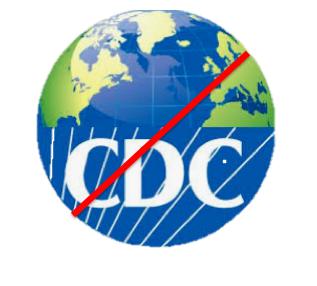
For people in pain, the following history is familiar. After a year of political maneuvering and under-the-table influence peddling, the National Center for Injury Prevention and Control (NCIPC) at CDC issued a “guideline” in March 2016, for prescription of opioid analgesics to adults with chronic pain. The guideline was profoundly biased against opioids. It was almost immediately weaponized by over 30 State legislatures, multiple Federal and State drug enforcement authorities and State Medical Boards, as a basis for prosecuting – or persecuting – doctors who treat pain with opioid analgesics.
In three and a half years since publication, hundreds of doctors have been driven out of pain management and hundreds of thousands of patients denied effective pain management. As the regulatory environment has turned ever more hostile, patients are dying at ever-increasing rates from medical collapse, unsafe street drugs and suicide.
Continuing this record of malfeasance and malpractice, Dr Houry – Director of NCIPC -- -- and many of her colleagues still refuse to admit their profound errors and the damage for which they are responsible. After being publicly admonished by over 300 physicians [link,] including several past US drug “czars”, CDC issued a so-called “clarification” in March 2019. In this document, CDC continued equivocating and doubling down on their errors. CDC claimed that the guidelines had been “misinterpreted” in a manner never intended by the authors, as a “mandate” for imposing forced tapers on legacy patients already on doses of prescription opioids higher than the thresholds recommended for a risk versus benefits review.
Bull Feathers! This claim fails even the most generous sniff test.
Anyone who writes policy should be familiar with a dictum that is well known in policy making communities. Policy is written not only for clarity, but also to deny a convenient misunderstanding to those who are politically disposed to oppose or manipulate change for their own purposes – which anti-opioid partisans immediately and predictably did. Even more tellingly, when the guidelines were issued, CDC ignored the recommendation of their own advisory board and failed to define any monitoring program to assess the outcomes of the changes they proposed. I suggest that the logic behind this failure may have been that the authors hoped to avoid criticism for the harm they knew would likely occur, if the harm wasn’t measured and reported.
The CDC Guidelines were founded on several key assumptions – none of which are supported by either science or 20 years of CDC published data on prescribing and mortality.
- CDC writers claimed that opioid analgesics are not effective in managing long-term pain. This is an obvious and outright lie. In 2017, “nearly one in three beneficiaries received at least one prescription opioid through Medicare Part D. Thirty-one percent of beneficiaries—14.1 million of the total 45.2 million enrolled in Medicare Part D—received opioids.” [link] However, we see no indications of increased rates of either addiction or mortality attributable to treatment, despite the alarmist misinterpretation of this statistic by HHS/CMS. Likewise, if the shortage of long-term trials data for opioids was a concern as CDC claimed, then it should also have been a concern for non-opioid medications and behavioral therapies, because long term trials for these alternatives are equally rare. CDC omitted this inconvenient fact from its guideline, thereby violating its own standards of research reporting.
- Also missing from the CDC guideline is any mention of the effects of genetic polymorphism in the expression of six key liver enzymes that regulate metabolism of 90% of all medications, especially opioids. Variations in these enzymes can produce a very broad range of the minimum effective dose from patient to patient. There can never be a one-size-fits-all standard dose, even for specific medical disorders. In typical physician practice, dose must instead be tailored to the individual by titrating up to effective levels, while managing side effects. As recognized by both the American Medical Association in November 2018, and by Dr Josh Bloom of ACSH, Morphine Milligram Equivalent Daily Dose (MMED) is not a useful metric and many patients benefit from dose levels well above those identified by CDC.
- CDC also claimed that alternative means of treating severe pain are available and are preferable to opioids. This claim is likewise a bald-faced lie. The evidence of effectiveness in medical literature for non-pharmacological or non-invasive alternatives to opioid analgesics (acupuncture, chiropractic, behavioral therapies etc.), is abysmal. Improvements in pain are at best marginal and temporary. Non-drug therapies have never been evaluated as substitutes for opioids, and no Phase II or Phase III multi-center trials have occurred. The most that can be said for such therapies is that they help a few people part of the time, when used for mild to moderate pain in coordination with a program of analgesic or anti-inflammatory drug therapy.
- The CDC writers also claimed that prescription opioids are inherently addictive and dangerous, noting that when prescribing rose from 1995 to 2010, overdose deaths also increased markedly. Unfortunately for the CDC thesis, the two trends were totally unrelated – as conclusively proven by their own published data. Multiple sources demonstrate that addiction is rare in medically managed patients [link] [link] [link]. Overdose deaths are instead dominated by illegal street drugs (fentanyl, heroin) and by multiple self-administered drugs and alcohol.
Fewer than 0.6% of post-surgical patients treated with opioids will later be diagnosed with a substance abuse disorder. [link] Less than 1% of post-surgical patients will renew their prescriptions for longer than 13 weeks [link]. In the largest demographic study ever published for opioid-related overdose mortality, patients prescribed opioid drugs had a mortality rate of 0.022% (22 deaths per hundred thousand population per year, in the entire State of North Carolina). [link] These results are reinforced by a two-year study of all opioid related deaths in Massachusetts, that found only 1.3% of opioid overdose victims had an active prescription. [link]
Published demographic data from the CDC also disprove the silly notion that our opioid “crisis” was created by careless doctors over-prescribing to their patients. [Link] [Link] Because painful conditions occur much more often in seniors than in youth, people over age 62 are prescribed opioid analgesics six times more often than youth under age 19. But overdose-related mortality rates in youth are six times higher than in seniors. Overdoses in youth have skyrocketed during the past 20 years while remaining relatively stable in seniors. There is no possible way these demographics can be explained as a consequence of prescribing. You can’t get there from here. Prescribing did not create our opioid crisis. Period!
Much has recently been made of yet another guideline released in September 2019 by the Department of Health and Human Services. Dr Houry oversees Dr Deborah Dowell, a principal author of both the CDC Guidelines and a “Guide for Appropriate Tapering or Discontinuation of Long-Term Opioid Use”. This new guide urges much more careful evaluation of opioid risks and benefits, and more gradual tapering schedules for patients than has been the rule to date. However, the apparent improvement in policy is largely illusory, given that CDC continues to assert a false cause and effect relationship between prescribing and overdose mortality.
Dr. Houry and her CDC colleagues have again doubled down on enormously destructive policy. Given the low absolute risk of bad outcomes for people treated with opioids, and the almost total absence of proven-safe and reliable alternatives, involuntary tapering of patients should become vanishingly rare. Involuntary discontinuation of long term opioid use is properly viewed as a fundamental violation of human rights and medical ethics.
We may well ask, “what should be done now?” Several solutions suggest themselves. First, we need National legislation implementing the AMA public repudiation of MMEDD as a measure of merit and holding physicians safe from unjustified persecution by DEA. Let’s direct DEA to address the real problems – imported illegal street drugs -- and get them completely out of the business of setting opioid production quotas or investigating doctors. [link] State Medical Boards have the latter mission already.
As part of this legislation, guidelines on opioid prescription should be taken out of the hands of the CDC which has made a royal mess of them. Instead, we need a bottom-up rewrite by National Academies of Medicine and FDA. This time, several patient advocates should be voting members of the review.
Equally important, the Veterans Health Administration should be directed to stand down from enforcing involuntary tapers on their patient population. Additionally, HHS Centers for Medicare and Medicaid Services rule changes authorizing insurers to obstruct high-dose prescribing should be withdrawn. Finally, Dr Houry and all of her CDC/NCIPC division chiefs should be fired for malfeasance, due to their evident disregard for public health and patient rights.



